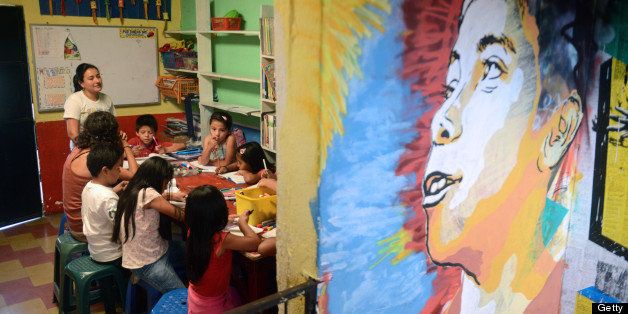
It was a unique moment at the Aspen Institute Ideas Festival. The opportunity to listen to a tutorial, "Will the Arts Survive Economic Hardships?" with Rocco Landesman, the current Chairman of the National Endowment for the Arts, Sidney Harman (Fellow of the American Academy of Arts and Sciences and Executive Committee of the Board of the Aspen Institute) and moderated by Dana Gioia, past Chairman of the National Endowment.
Here were three individuals deeply committed to the arts and keenly knowledgeable about our government's interaction and its programs focused on the arts and the arts community. Sadly, what was said conveyed a sense of muted dialogue with government, minimal government support when compared to other sectors of our economy and lives, and most fundamentally, limited respect.
Almost painfully, the panel pointed out the lack of understanding government has shown as to what the arts could accomplish in forming the character of our children and students, arts education having nearly vanished from our schools. That, and the role the arts could play in urban development, revitalizing our communities and neighborhoods. Cited by Mr. Landesman was the work being done by the Social Impact of the Arts Project, a research center at the University of Pennsylvania's school of Social Policy and Practice, supported in part by the Rockefeller Foundation. This study of local communities, particularly in Baltimore and Philadelphia, determined the extraordinary salutary impact of the arts including such clearly discernible improvements as:
-greater civic engagement
-social cohesion
-child welfare, specifically reducing delinquency and truancy
-higher incomes
-higher property taxes
-higher economic activity
And yet the lack of respect or perhaps the understanding of the arts in government is palpable. The monies set aside for art projects through the NEA pales by comparison to that of other nations. The NEA's budget of some $160 million/year is, given all our other governmental priorities and disbursements, pitiful (my comment -- France's Ministry of Culture's budget would be more that $9 billion on a pro rata basis, if you compared the two organizations. Though they have somewhat different mandates, the difference in sums speaks volumes.)
The issue was made clear in the current economic stimulus package of more than $700 billion dollars where the speakers once again pointed out (please see, "A Nation's Shame: Bailing Out Wall Street By The Bucketful While Supporting Our Great Art Traditions With An Eyedropper" 04.14.09) barely $50 million was accorded the arts, even though the arts and arts organizations employ some 6,000,000 workers according to Landesman. These funds were severely restricted, not to help arts organizations survive in crippling economic times, but exclusively focused on job preservation. (My personal aside, it probably took more paperwork to get funding for one employee at an art institution than to transfer billions to Goldman Sachs from the Fed via AIG.)
Sidney Harman oft times repeated a basic tenet of the current government/arts landscape, that the arts are viewed by too many in government as a dilettante enterprise, thereby missing its fundamental importance to our society's innovation, creativity and progress.
There was a recognition that the arts lacked a central voice to bring to the fore the needs and the concerns of the art community and what government could do, to the benefit of the arts and the nation, to help assuage this prevalent lack of communal understanding. That the NEA under Landesman was taking steps to bring this about, so that government and arts organizations and its communities could once again become true partners toward building a national vision for the arts.
In referring to "how government could once again become a true partner building a national vision for the arts " a poignant piece of history was touched upon during the discussion. In similar times of economic upheaval, in the Depression years of the 30s, the massive government employment program of that day, the W.P.A. provided, encouraged and sponsored great art initiatives employing thousands of artists who left to the nation a legacy of art accomplishment to which we take pride to this day. The question was asked, "What has happened to us since then?"